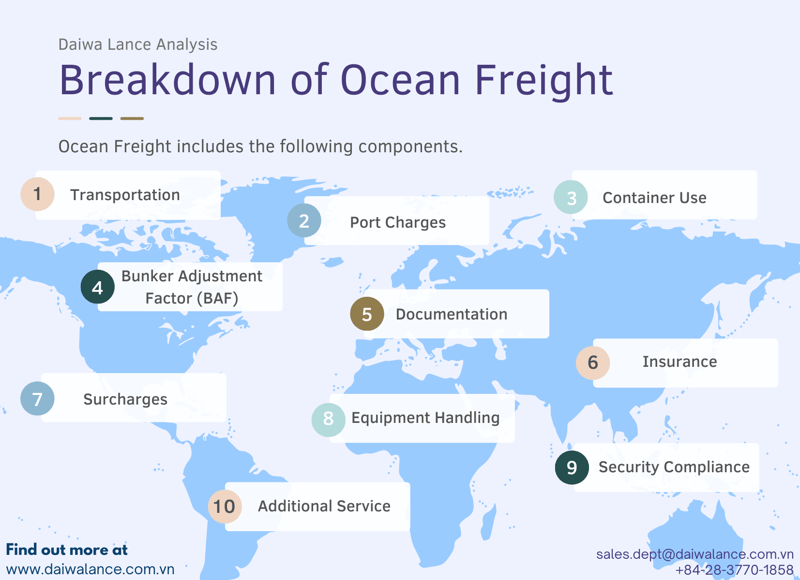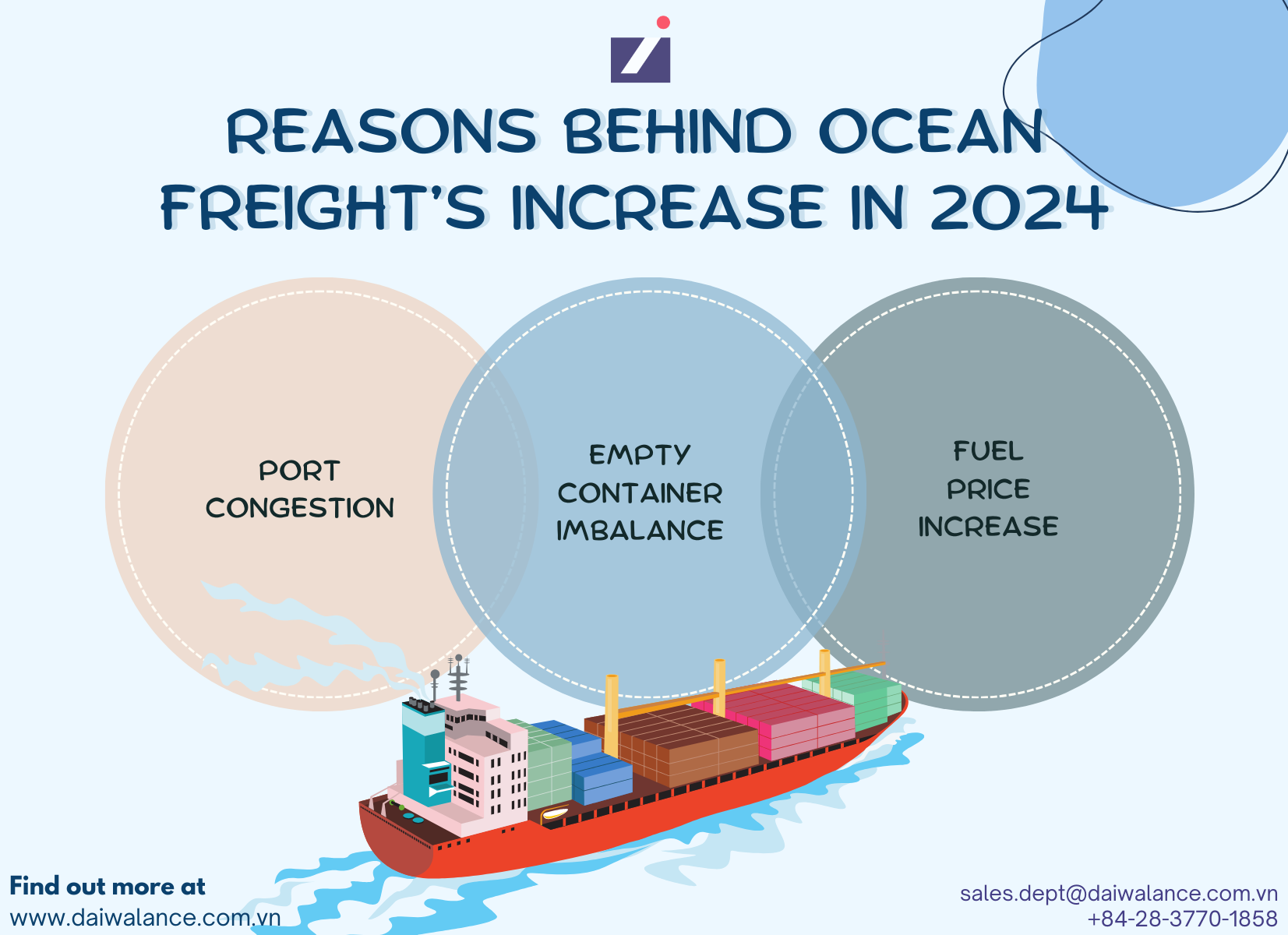As we approach the end of 2023 and the beginning of 2024, there are various factors impacting the cost of raw materials for steel products, with one of the most significant being the surge in ocean freight rates. Recent political conflicts, particularly the attacks by Yemen's Houthi rebels on commercial ships in the Red Sea, have further complicated matters, leading to disruptions in ship schedules.
To gain a comprehensive understanding of the present scenario and anticipate the future trends in ocean freight, delve into the informative newsletter highlighted in this blog post. It explores extensively the realities on the ground and sheds light on the underlying factors driving these impacts.

What’s Going On with Global Ocean Freight?
According to reports from major shipping lines, current freight rates from Asia to several destinations in the Americas and Europe have significantly increased. This has heightened concerns for shippers and consignees, who directly bear the additional costs. For example:
- For routes to Turkey and Belgium: Freight rates for January 2024 have doubled compared to December 2023.
- For routes to North American routes: Freight rates for January 2024 have risen by 30% compared to December 2023.
- For routes to South American routes: Freight rates for January 2024 have surged by 50% compared to November 2023.
RELATED POST
Overall Breakdown of Ocean Freight
To understand the reasons behind the increase in ocean freight rates, it is important to have a breakdown of what comprises ocean freight. Here is a comprehensive breakdown for your reference.

1. Transportation
The primary component of ocean freight covers the actual movement of goods from the port of origin to the port of destination.
2. Port Charges
Fees charged by the ports for services such as loading and unloading cargo, terminal handling, and berth usage.
3. Container Use
The cost associated with using shipping containers, which may vary depending on the type and size of the container (e.g., 20-foot, 40-foot containers).
4. Bunker Adjustment Factor (BAF)
This is a charge to account for fluctuations in fuel prices. BAF is based on the price of bunker fuel and is adjusted periodically.
5. Documentation
Costs related to documentation, including bills of lading, customs paperwork, and other relevant documentation required for international shipping.
6. Insurance
While basic coverage might be included, additional insurance for the shipment may incur extra costs. Shippers often have the option to purchase marine cargo insurance to protect against potential loss or damage during transit.
7. Surcharges
Various surcharges may apply, depending on factors such as the type of cargo, destination, or specific services required. Examples include currency adjustment factor (CAF), peak season surcharges, or congestion charges.
8. Equipment Handling
Charges for specialized equipment or services, such as refrigerated containers (reefers) for temperature-sensitive goods or oversized cargo handling.
9. Security and Compliance
Fees related to security measures, customs compliance, or regulatory requirements imposed by international conventions or local authorities.
10. Additional Services
Optional services like cargo tracking, warehousing, or inland transportation (from the port to the final destination) may also be available at additional costs.
The Reasons Behind Ocean Freight’s Continued Rise
From the breakdown of the components that make up ocean freight above, we can observe three primary factors that contribute to the increase in ocean freight at the beginning of 2024.

1. Port Congestion
The first reason for the increase in ocean freight rates is due to the recent attacks on commercial ships by Yemen's Houthi rebels in the Red Sea. This has led to a major disruption in the crucial trade route that connects Asia and Europe through the Suez Canal, which accounts for 12% of global cargo volume. As a result, additional costs have been incurred to address the congestion at the affected ports, including the need for alternative routes around Africa, which take more than 25% longer and significantly contribute to the surge in ocean freight rates.
2. Empty Container Imbalance
Shipping lines operate on continuous routes, which means that while congestion may occur in the cargo transit channel from Asia to Europe, the empty container movement continues across continents. After delivering goods from Asia to Europe, a container can then proceed to North America, South America, and other regions. Therefore, when ports become congested, the cost of transporting empty containers also increases, contributing to the rise in ocean freight rates.
3. Fuel Price Increase
The Yemen Houthi events have had a dual impact on fuel prices. Specifically, the rerouting adding 6,000 nautical miles to the ship's journey from Asia to Europe has significantly increased fuel costs. As a result, shipping lines have been forced to increase fuel surcharges. Peter Sand, the chief analyst at market analysis company Xeneta based in Copenhagen, explains, "If you were to make a round trip from Shanghai to Rotterdam, you would incur an additional one million US dollars in fuel costs when rerouting via the Cape of Good Hope. So, that alone is already a massive bill."
Conclusion
Managing the increase in ocean freight rates can present challenges for businesses involved in international trade. To minimize cost overruns and supply shortages, as a savvy supply chain manager, you can strategically plan and optimize your inventory management to avoid the need to purchase additional goods in the early stages of the year. Alternatively, in the case of smaller warehouses that still require additional purchases at the beginning of the year, it is important to select a reputable supplier with reasonable proposed costs for ocean freight. For more information on ocean freight or for advice on the best time to make purchases that align with your inventory needs, please contact Daiwa Lance at the address provided below.
- Category:
- General Topics
- Keyword:
- transport lance pipes by sea




















